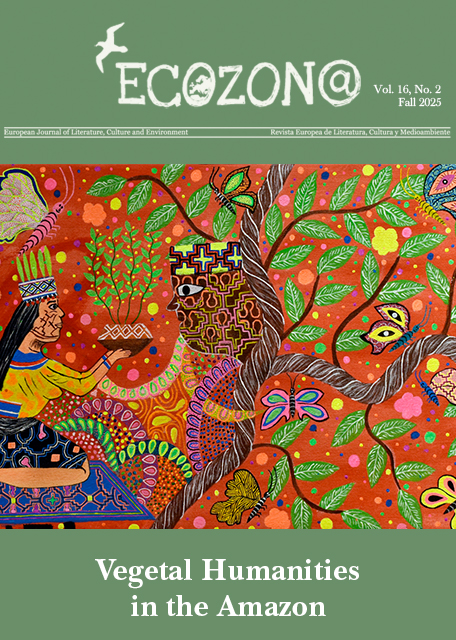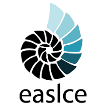<b>Desierto - Piedra</b> // Desert - Stone
DOI:
https://doi.org/10.37536/ECOZONA.2017.8.1.1389Abstract
Resumen
Desierto
La obra Desierto, fue especialmente creada para el contexto chileno: habla de las formas de opresión, abuso, racismo y colonialismo que se ocultan tras la exitosa industria de la explotación del pino, que ha invadido el territorio mapuche, generando además graves daños al ecosistema. El problema de la tierra y de los pueblos indígenas que han sido violentados y saqueados por las familias pudientes y el Estado, no es un problema ajeno a Guatemala. Durante la guerra en mi país, la estrategia de la tierra arrasada fue una constante. Miles de indígenas mayas fueron atrincherados en sus comunidades, los asesinaron y les expropiaron las tierras, que hoy son negocio de familias oligarcas, del Estado o de extranjeros. En Guatemala no hay pino pero hay otra forma de aniquilar la tierra. En Guatemala se da la palma africana que ha venido creciendo de manera desorbitante y ha causado estragos. Recientemente la fábrica Repsa (que elabora aceite de palma marca Olmeca) contaminó los ríos. En sus aguas miles de peces y demás han muerto en un ecocidio sin precedente.
Piedra
Mi cuerpo permanece inmóvil, cubierto de carbón, como piedra. Dos voluntarios y alguien del público orina sobre el cuerpo piedra.
Fotos: Julio Pantoja, Marlene Ramírez-Cancio.
Abstract
Desert
“Desierto” was created especially for the Chilean context: it speaks to the forms of oppression, abuse, racism, and colonialism that hide behind the success of the forestry industry, dedicated to the exploitation of pine trees, that has invaded indigenous Mapuche-Huilliche lands, causing grave damage to the ecosystem. The problem of indigenous communities being subjected to violence and their lands being pillaged by wealthy families and the State is not foreign to Guatemala. During the war in my country, the scorched earth strategy was a constant. Thousands of indigenous Mayan people were beseiged in their communities and murdered, while their lands were expropriated, becoming the source of profit for local oligarchies, the State, and foreign corporations. In Guatemala, there are no pines, but there are other forms of annihilating the land, among them the rapid proliferation of highly destructive palm-oil plantations. Recently, the Repsa factory, which makes Olmeca brand palm oil, has been polluting Guatemala’s rivers, killing thousands of fish in an unprecedented ecocide.
Piedra
My body remains immobile, covered with charcoal, like a stone. Two volunteers and a member of the audience urinate on the stone body.
Photos: Julio Pantoja, Marlene Ramírez-Cancio.
(English transl. by Mark Anderson)
Downloads
Downloads
Published
Issue
Section
License
Authors who publish with this journal agree to the following terms:
a) Authors retain copyright and grant the journal right of first publication with the work simultaneously licensed under a Creative Commons Attribution License that allows others to share the work with an acknowledgement of the work's authorship and initial publication in this journal (CC BY-NC for articles and CC BY-NC-ND for creative work, unless author requests otherwise.
b) Authors are able to enter into separate, additional contractual arrangements for the non-exclusive distribution of the journal's published version of the work (e.g., post it to an institutional repository or publish it in a book), with an acknowledgement of its initial publication in this journal.
c) Authors are permitted and encouraged to post their work online (e.g., in institutional repositories or on their website) prior to and during the submission process, as it can lead to productive exchanges, as well as earlier and greater citation of published work (See The Effect of Open Access).










